ACS APPLIED ENERGY MATERIALS: Superfine antimony pillared multilayer Ti3C2Tx-MXenes for advanced sodium storage
QQ Academic Group: 1092348845
Detailed
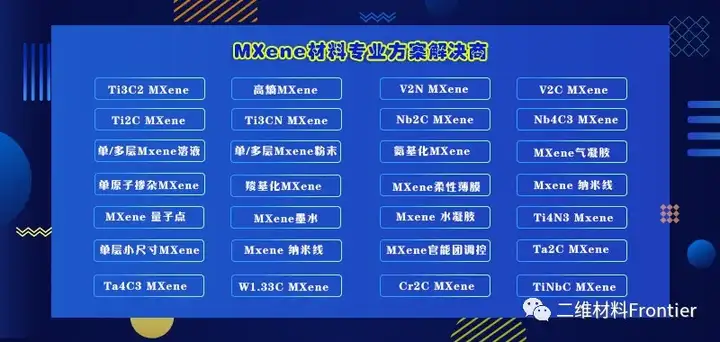

1. Article overview
In this paper, Sb ultrafine particles were cleverly modified onto flexible multilayer Ti3C2T (f-Ti3C2Tx) nanosheets through a simple electrostatic adsorption and annealing process, and Sb pillared Ti3C2Tx (Sb/p-Ti3C2Tx) composite materials were prepared. Benefiting from the enhanced dynamic properties of highly conductive pillared f-Ti3C2Tx and ultrafine Sb nanoparticles, the composite exhibits a reversible charging capacity of 438.1 mAh g-1 at 50 mA g-1 and 126.6 mAh g- at 2 hours 1 High retention rate. In addition, the strong interaction between Sb and Ti3C2Tx through the Ti-O-Sb chemical bond gives the composite high structural stability, leading to good cycle sustainability. And for the first time successfully integrated the dual advantages of MXenes low-layer state and pillar technology into MXene-based SIB composites, which can overcome the shortcomings of Sb anodes, and realize the development of columnar few-layer MXene composites in SIBs, and promote MXenes Commercialization process in SIBs.
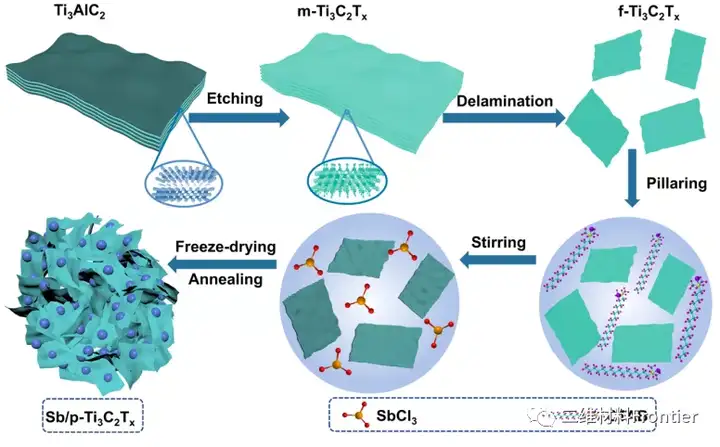
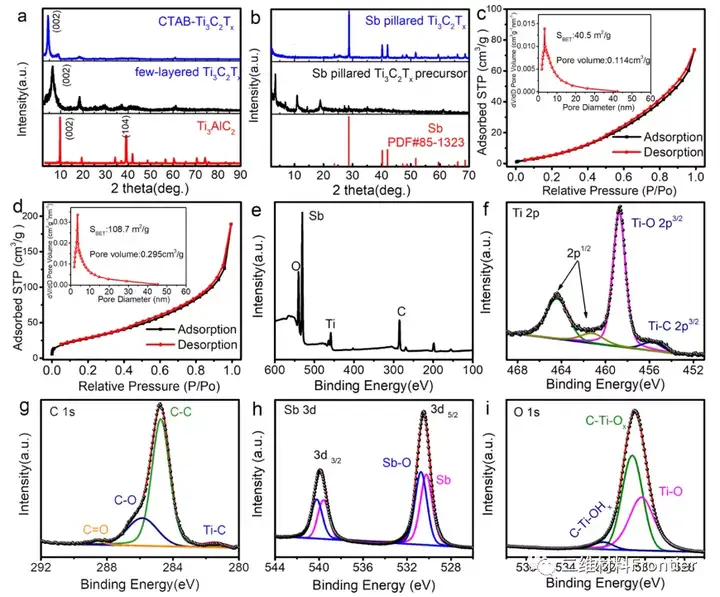
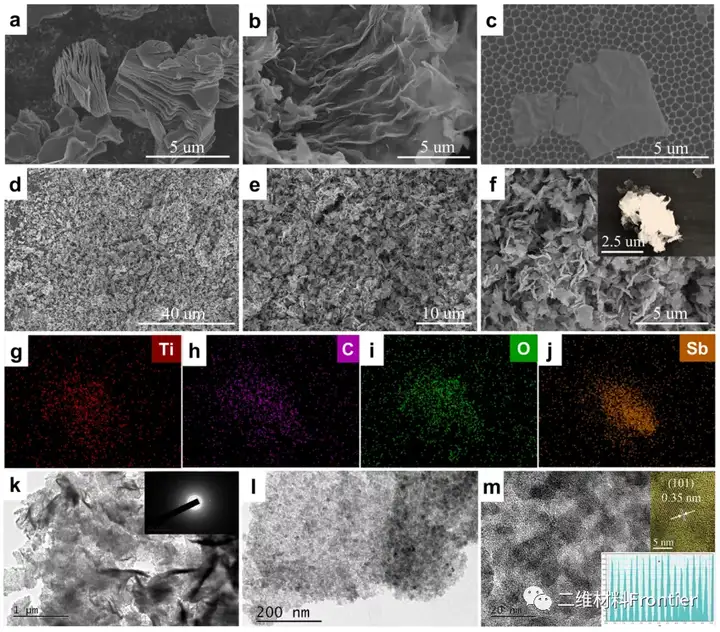
SEM results show that m-Ti3C2Tx is accordion-like. After the layering process, f-Ti3C2Tx MXenes can be obtained with a layered morphology with slight wrinkles on the surface. Figure 3d-f shows that after being synthesized with Sb nanoparticles, Ti3C2Tx has a layered structure, except that the thickness of Ti3C2Tx is significantly increased due to partial insertion of Sb. The EDS element mapping shows a uniform composite of Sb. Transmission electron microscopy shows that there are no Sb nanoparticles on the MXene matrix. The aggregation (Figure 3l). The selected area electron diffraction (SAED) pattern shows the polycrystalline state of Sb nanoparticles and Ti3C2Tx (inset of Figure 3k). High-resolution transmission electron microscopy (HRTEM) shows that monodisperse silver nanoparticles around 10nm are uniformly embedded in the conductive Ti3C2Tx matrix. Accurate measurement shows that the d-spacing is 0.35nm, which corresponds to the (101) plane of metal Sb.
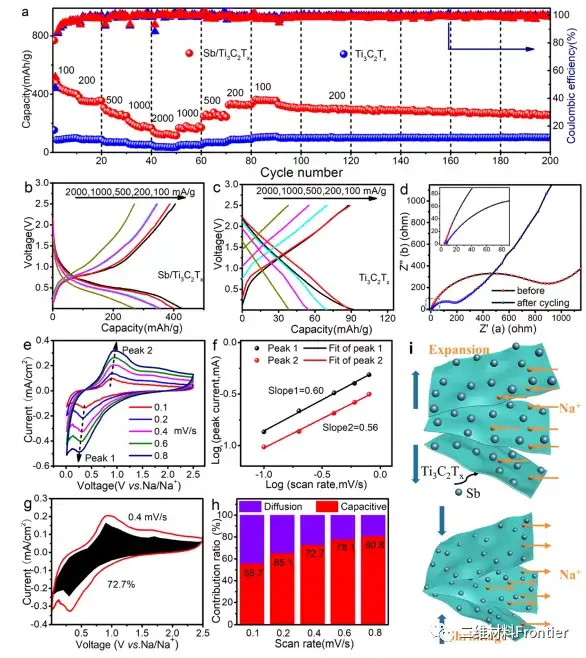
This article reports a layered Sb/p-Ti3C2Tx composite material in which part of the active Sb is intercalated between the layers through a pillaring process combined with electrostatic adsorption and annealing, and ultrafine Sb nanoparticles are tightly fixed on the f-Ti3C2Tx. The flexible f-Ti3C2Tx matrix prepared by the modified solution phase flocculation method is an ideal carrier for Sb nanoparticles by constructing a highly efficient conductive network and generating strong interfacial interactions. It can prevent particles from crushing and agglomerating during the continuous insertion/extraction of Na+ , Thereby improving conductivity and structural stability. In addition, Sb nanoparticles are uniformly distributed on the surface and interface of Ti3C2Tx, acting as a space fence to inhibit the agglomeration and collapse of Ti3C2Tx nanosheets. The synergistic effect between Ti3C2Tx matrix and Sb ultrafine particles is the reason for achieving excellent electrochemical sodium storage performance with high retention rate and long cycle stability. Sb/p-Ti3C2Tx composite material shows the superiority of f-MXenes as the anode matrix of sodium-ion battery, its volume fluctuates sharply, and its conductivity is insufficient. This work further broadens the application range of f-MXenes, provides a feasible strategy for SIB to design high-performance pillared MXene-based composites, and expands the preparation and application of pillared MXene-based composites. Surveillance and security protection have great application prospects.
Article link:
https://pubs.acs.org/doi/10.1021/acsaem.1c01863.
This information is sourced from the Internet for academic exchanges only. If there is any infringement, please contact us to delete it immediately.
- Previous: ACS NANO:Ti3C2Tx MXene
- Next: A Rising 2D Star: Nove


 Academic Frontier
Academic Frontier